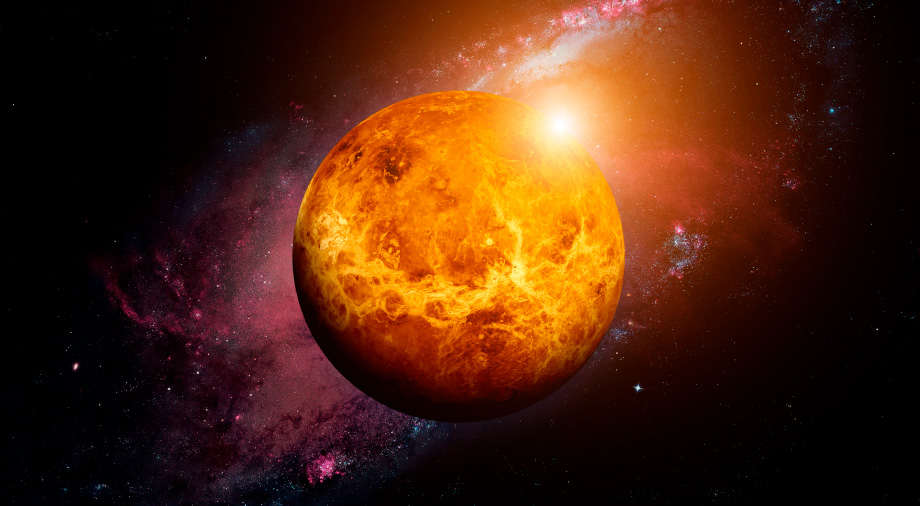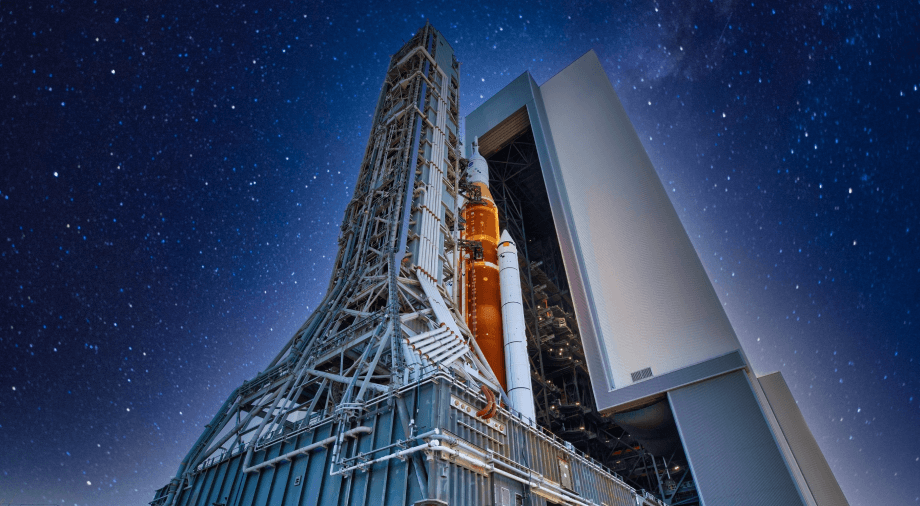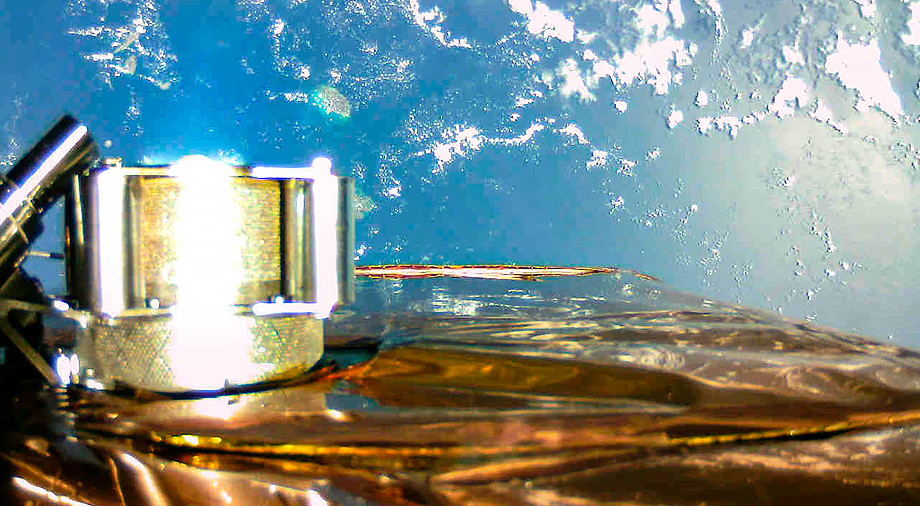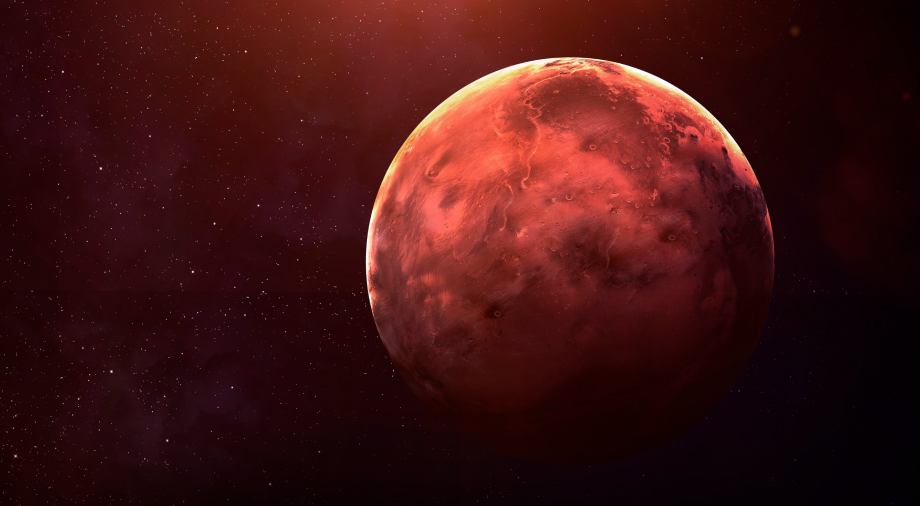Of all the planets in the solar system, Venus is the closest to us on Earth. Moreover, Venus strongly resembles Earth in size and mass, which is why the two planets are sometimes called sisters. Despite all this,Venus has not been particularly tantalizing to space agencies. Now, while there is a whole flotilla of various devices studying Mars, and NASA is preparing to return people to the Moon, there is only one mission currently exploring Earth’s nearest neighbor.
But it was not always so. In this material, we will talk about how in the 20th century, humanity studied Venus and lifted the veil from some of its secrets.
Mystery planet
If you read books published back in the middle of the last century, you may notice how scarce information about Venus was at that time. Astronomers knew that our Sun’s second planet was somewhat smaller than the Earth, that it had an atmosphere, and that its surface was constantly hidden by clouds, but that was basically it. The rest was a matter of pure speculation. Scientists did not even know the planet’s period of rotation or whether it rotated on its axis at all or constantly faced the Sun with the same side.
All this created fertile ground for numerous hypotheses whose authors tried to predict what exactly was hidden under the thick Venusian clouds. Various assumptions were made, ranging from describing Venus as a boring and unremarkable desert, to very optimistic forecasts that conditions on the planet’s surface resembled the Earth during the Carboniferous period, with corresponding flora and fauna. There was also a popular idea that the whole surface of the planet was an ocean. Even more extravagant conjectures were put forward, such as that Venus was completely covered in oil or was in the middle of an ice age.

Of course, science fiction writers were most enthralled by Venus. Adventure novelists typically described the planet as a prehistoric version of Earth. Their second planet from the Sun appeared as a hot swampy world inhabited by exotic lizard-like creatures and natives (for whom the story’s heroes, who arrived from Earth, of course were charged with introducing them to the benefits of civilization).
But that’s how it was in fantasy. What about reality? In the 1930s, scientists first tried to determine the composition of Venus’s atmosphere, but were unable to obtain any reliable data due to flaws in their instruments and observation methods.
One really important milestone in the history of the study of Venus came in 1961, when the USSR made the first attempt to send an automatic orbiter to the planet. More precisely, it made two attempts, as the low reliability of technology in those days meant that spacecraft were duplicated and launched in pairs. The first spacecraft failed to break Earth orbit and soon crashed back to Earth (curiously, a pennant which was on board the craft managed to be recovered). The second made it to Venus, but lost contact with Earth only a few days later. According to Soviet tradition, the orbiter that managed to at least leave the vicinity of the Earth received the designation Venera-1, while the second device was called the “Heavy Satellite”.
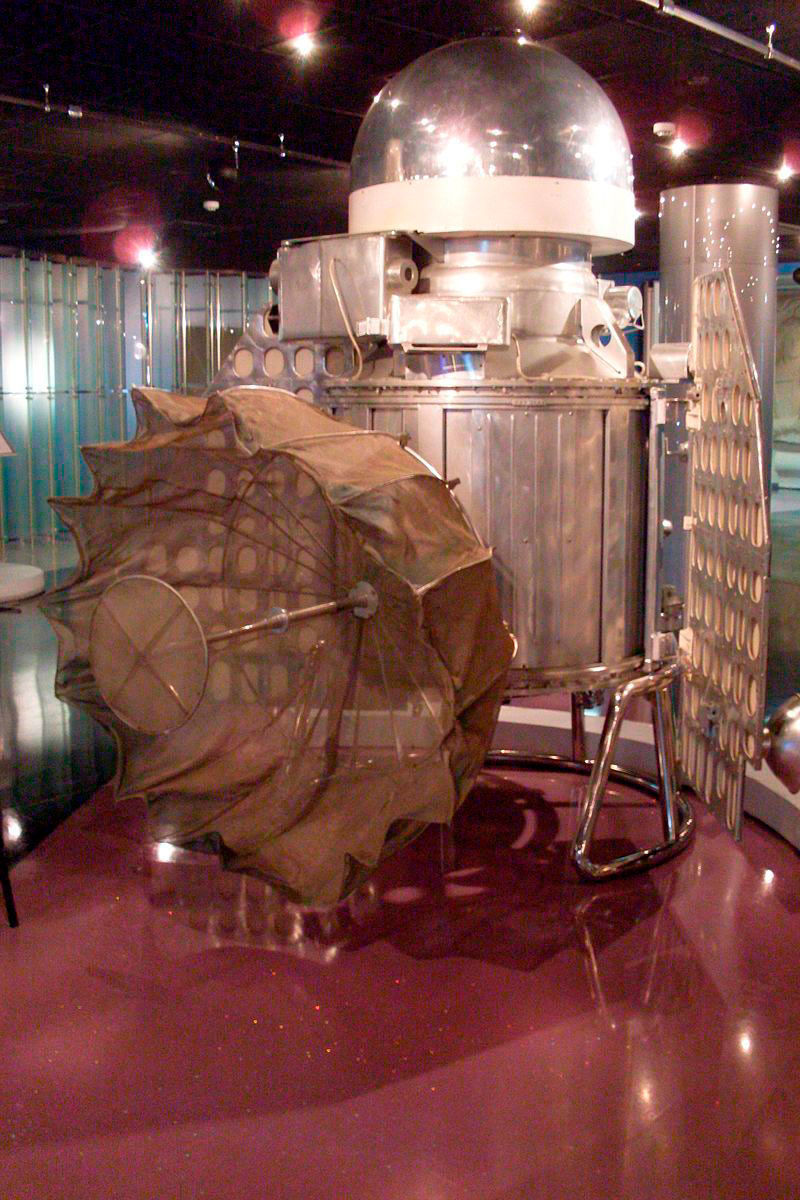
The next year, it was NASA’s turn to try its luck with a pair of Mariner probes. And while Mariner 1, due to a ridiculous mistake (someone missed one character in the flight program), plunged into the ocean shortly after launch, Mariner 2 successfully set off for Venus. Despite a number of technical problems, on December 14, 1962, the craft made a close flyby of the planet. The data it collected showed that the upper layers of Venus’s atmosphere are heated to very high temperatures. Mariner 2 found no evidence of a magnetic field on Venus.
Around the same time, astronomers attempted to measure the planet’s rotation period using radio telescopes. The first observations showed that while Venus does rotate about its axis, it does so much more slowly than the Earth. By the mid-1960s, it was possible to determine that Venus’s period of rotation is 243 days. Since the planet makes one revolution around the Sun in 224 days, this means that the Venusian day is longer than the Venusian year. On top of that, it turned out that Venus has a retrograde rotation. While almost all other planets in the solar system rotate counterclockwise (when viewed from the North Pole), Venus rotates clockwise.
Disappointment of the century
Despite the disappointing Mariner 2 data on the temperature of Venus’s upper atmosphere, not all scientists were ready to put an end to the idea of the planet’s habitability. They developed a rather convincing model proving that even with such harsh conditions, the surface of Venus could still possibly support life.
There was only one way to test this assumption: by sending new probes to Venus. Since NASA was concentrating almost all its efforts at that time on the Moon, for several years the USSR had the opportunity to study Venus in splendid isolation. On the other hand, not all went smoothly. In total, in the period from 1962 to 1965, the Soviets sent nine vehicles to Venus. However, only two of them managed to overcome the Earth’s gravity (they received the designations Venera-2 and Venera-3), and both ended up failing long before reaching their destination. A small consolation was that the results of ballistic calculations showed that Venera-3 was on track to enter the Venusian atmosphere and become the first spacecraft in history to reach the surface of another planet.
At that time, scientists still had a rather vague idea of what might be hiding beneath the clouds of Venus. Therefore, the Soviet landers were designed to fall to the surface: they had instruments for studying the characteristics of the Venusian ocean and a “sugar lock,” which, when upon contact with liquid water, was supposed to dissolve and release an antenna.
The key year was 1967, when Venera-4 was launched. By that time, astronomers had received new data confirming that Venus was a hot world and its atmosphere was noticeably denser than the earth’s. However, no one knew the exact figures. The designers built the Venera-4 descent module with capacity to withstand pressure of up to 20 atmospheres, which was believed that this is more than enough.
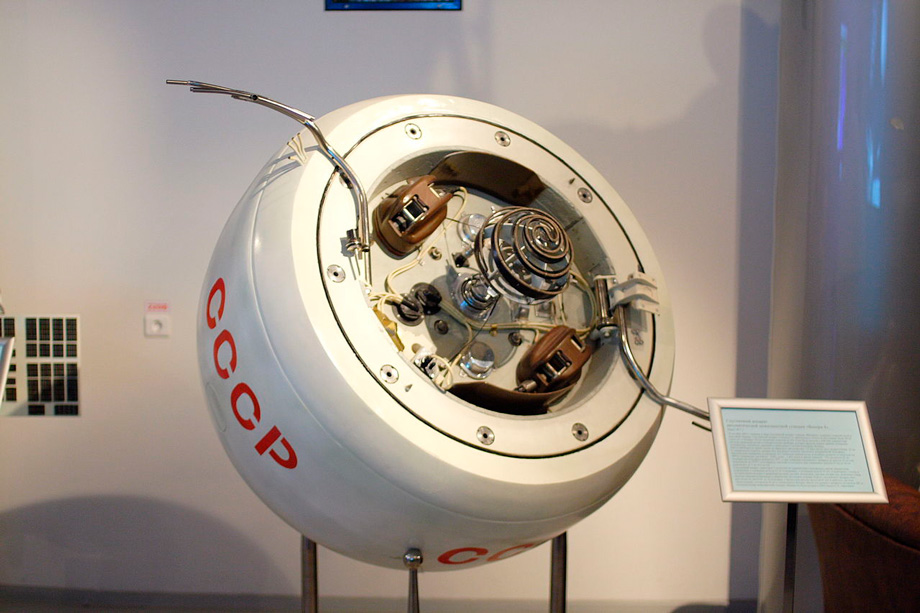
Venera-4 entered the Venusian atmosphere on October 8, 1967. Its descent vehicle fell silent when the temperature onboard reached 262°C and the pressure was 18 atmospheres. Initially, it was believed that the module crashed during landing, and that these figures represented atmospheric indicators on the surface of the planet. But a more detailed analysis of telemetry proved that the conclusions are incorrect, and that Venera-4 failed at an altitude of 28 km, never reaching the planet’s surface while functioning.
The day after Venera-4’s attempt, the planet was visited by the American Mariner 5. Its data confirmed that the atmosphere of the planet is heated to enormous temperatures. The reason for this also became clear – the probe found that more than 90% of Venus’s atmosphere is carbon dioxide, which creates a powerful greenhouse effect. Prior to the flights of Venera 4 and Mariner 5, it was believed that the main component of the Venusian atmosphere was nitrogen. Over time, scientists were able to uncover the secret of the famous clouds of Venus that hide its surface. It turned out that they consist of droplets of sulfuric acid.
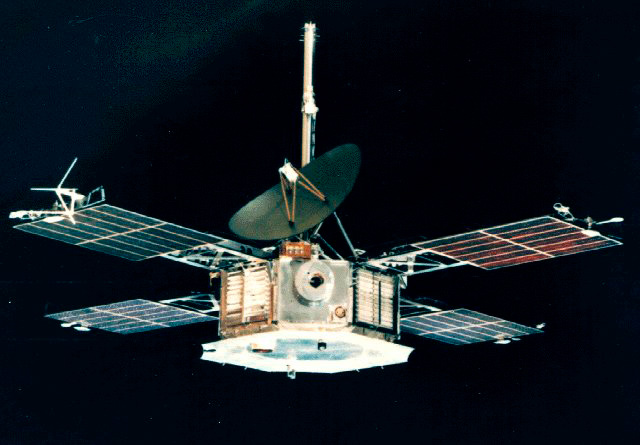
Despite the clear scientific triumph, the discovery of Venus’s true nature was a great disappointment for many people, both scientists and ordinary astronomy enthusiasts, who believed until the end that the planet was sufficiently Earth-like that we might find life or the conditions to support it there. In time, this discovery almost coincided with the first results of the study of Mars by spacecraft, which showed that the red planet was a cratered desert world with no visible signs of life. It was these events that largely provoked a significant decline in public interest in space research in the late 1960s.
Photographing Venus
Later on, the solar system’s second planet would be visited by Venera-5 and Venera-6. Since they were built before the landing of Venera-4, the designers no longer had the opportunity to remake their descent vehicles. Therefore, they would share the fate of their predecessor, confirming information on the extreme conditions in Venus’s atmosphere.
The first spacecraft in history to safely reach the surface of the planet was Venera-7, which achieved the feat on December 15, 1970. Analysis of the data transmitted by the spacecraft made it possible to determine that the temperature in the landing area exceeded 450°C, with a pressure of 90 atmospheres. It turned out that the surface of Venus was hotter than Mercury’s. This data finally buried all hopes of finding there is life.
Two years later, Venera-8 showed that the temperature on the surface to be about 470 ° C, and the pressure to be 90 atmospheres, which is equivalent to the pressure at a depth of 900 m in the Earth’s oceans. The device was able to measure the lighting conditions, which turned out to be comparable to a cloudy day on earth.
After that, the natural next step for Soviet designers was to obtain the first ever pictures of the Venusian surface. But could one take photos in such extreme conditions? It was obvious that if the camera was placed outside the containment, the enormous pressure and temperature would instantly destroy it. Therefore, the camera was instead placed inside a sealed compartment with a manageable temperature. Through a special porthole, light from the surface was captured by a periscope device, which then directed it to the camera.
This turned out to be a good decision. In 1975, Venera-9 and Venera-10 transmitted the first ever black and white panoramas of the planet. Interestingly, before the success of these missions, some scientists suggested that as a result of the enormous pressure on the planet’s surface, there would be such powerful refraction that Venus would be able to photograph itself. Another view held that the surface could be completely hidden by haze.

However, everything turned out to be much easier. Venera-9’s photographs showed scientists an area covered with sharp-edged rocks. The Venera 10 panorama showed formations that looked like solidified lava flows. Neither dust nor fog, nor the effect of superrefraction, nor other amazing optical effects were found in the planet’s atmosphere.

While the USSR had clear dominance in the exploration of Venus, it cannot be said that NASA was totally uninterested in the second planet. Rather, the issue was that NASA was carrying out a large number of different projects, and the relatively well-studied Venus was not a priority goal. In turn, for the USSR, Venus became a kind of lifesaver. Successes in its study and many “firsts in history” allowed Soviet engineers to partly compensate for the consequences of losing the lunar race and numerous failed Martian missions.
However, in the late 1970s, NASA decided to challenge the Soviet monopoly on Venus. In 1978, the missions Pioneer Venus 1 and Pioneer Venus 2 travelled to the planet. The pioneering Venus 1 studied the planet’s atmosphere and built the first, albeit very rough, radar map of its surface. The second mission dropped several probes, one of which managed to analyze a droplet from the Venusian atmosphere. It turned out that it contains 100-150 times more heavy water than Earth, which indicates that there was much more water on Venus in the distant past.
Interestingly, one of the Pioneer Venus atmospheric probes managed to reach the surface and transmit signals from it for 67 minutes, even though it was not even designed to land. This is explained by the fact that the extremely dense atmosphere on Venus makes the free fall velocity relatively low, which meant that the spacecraft could land without using a parachute.
The USSR responded by attempting to obtain color photographs of the planet’s surface. The task was assigned to the Venera-11 and Venera-12 probes launched in 1978. Both vehicles successfully landed and worked for over an hour on the surface of the planet. However, mission control never received a single panorama for a very unusual reason: the protective covers simply did not come off the probes’ photometers.


After this embarrassing fiasco, engineers made a series of changes to the design of a pair of subsequent devices, which were designated Venera-13 and Venera-14. They landed in March 1982, transmitting the first (and currently the last) color panoramas of Venus’s surface. Over the next forty years, no spacecraft ever again photographed the planet’s landscapes.


A soil analysis was also carried out, and noise data was collected. Later, scientists used this information to create a synthesized recording of sounds that could be heard at the time of the devices’ landing. One of the sounds heard appears to be a thunderclap. Venera 13 also managed to operate for a whole 127 minutes on the surface – a record that is yet to be broken.
Flights in Venus’s clouds and mapping the planet
In 1983, the Soviet Union launched its last pair of probes to Venus, Venera-15 and Venera-16. They were equipped with radars designed for surface mapping. In total, they managed to map about a quarter of the planet and revealed several new types of relief structures.
The swan song of the Soviet program for the study of Venus was Vega. Its main objective was to study Halley’s Comet, but it visited Venus on the way, dropping landing modules and balloon probes into its atmosphere.
There were some technical hiccups, but the curious experiment as a whole was successful. The landers studied Venus’s atmosphere and soil in detail, while the stratospheric balloons dropped into the atmosphere operated for almost two days, proving the viability of this method of studying the planet.
The Vegas were the last Soviet devices to be sent to Venus. The final mission in its study in the 20th century was carried out by the Magellan probe launched in 1989 (curiously, this was the first American interplanetary vehicle to be launched since 1978). Its scientific filling consisted of only one tool – a side-looking radar.
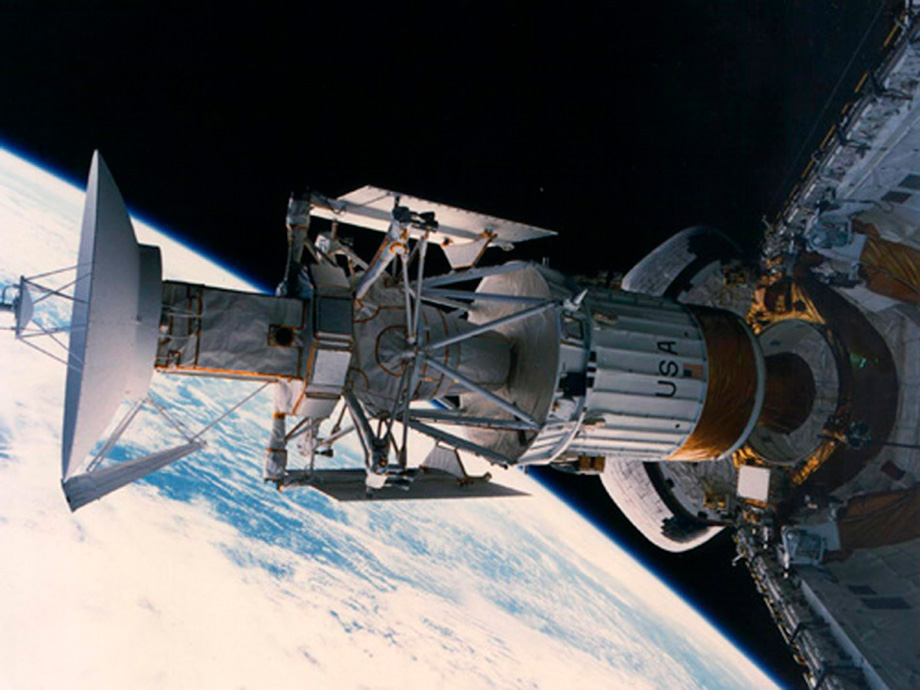
The crew of Space Shuttle Atlantis deployed Magellan to begin its journey to Venus. Credit: NASA
Magellan went into orbit around Venus in 1990, and over the next four years mapped 98% of its surface with a resolution of up to 100 m/pixel. This remains the most detailed map of the planet to this day.
The Magellan map showed many interesting details. It turned out that 80% of Venus’s surface is occupied by smooth volcanic plains. There are only three large elevated regions on the planet which are analogous to Earth’s continents.
Scientists also discovered many volcanoes that may still be active, but the impact craters on Venus are much smaller than expected. Overall, in geologic terms, Venus has a very young surface. It is believed that about 500 million years ago, the planet experienced some kind of global catastrophe, during which it was almost completely covered with an ocean of lava, which subsequently solidified and “renewed” its surface terrain. The cause of this event remains a subject of scholarly debate.
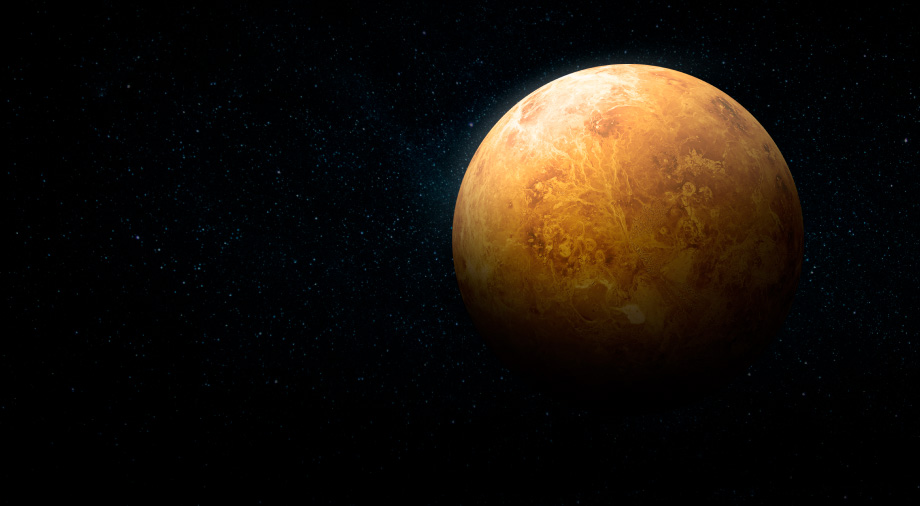
However, even with plenty of intriguing data and unanswered questions, the study of Venus was put on a long pause after Magellan. This was partly due to the need to analyze and systematize the data already collected. The extreme conditions on the planet’s surface, which significantly limit the operating life of descent vehicles, also played a role in this. Some NASA employees explain our relative ignorance about Venus by arguing that at a cost comparable to that of a Mars rover, a Venus landing mission would last only a few hours, while the Mars rover would operate for years, regularly transmitting data and images that can then be shown to the public as an example of what taxpayer money is being spent on. That is why NASA has given priority to other projects for many years, always leaving Venus for later.
The situation has begun to change only recently. We will tell you more about how a “Venusian renaissance” is taking place, and what questions scientists hope to find answers to in the next part of our series.

